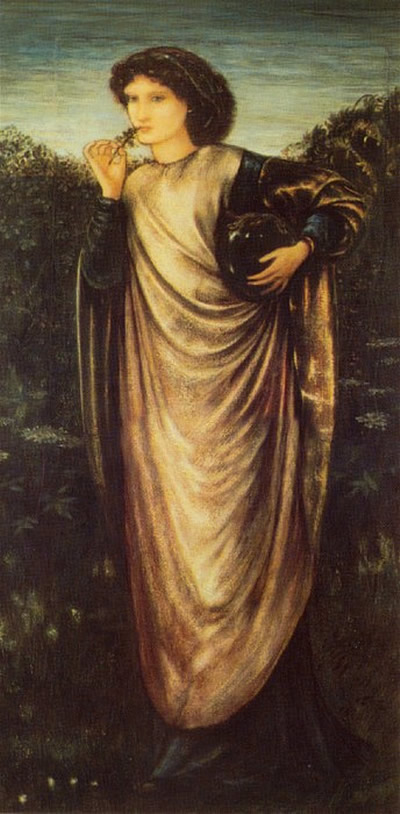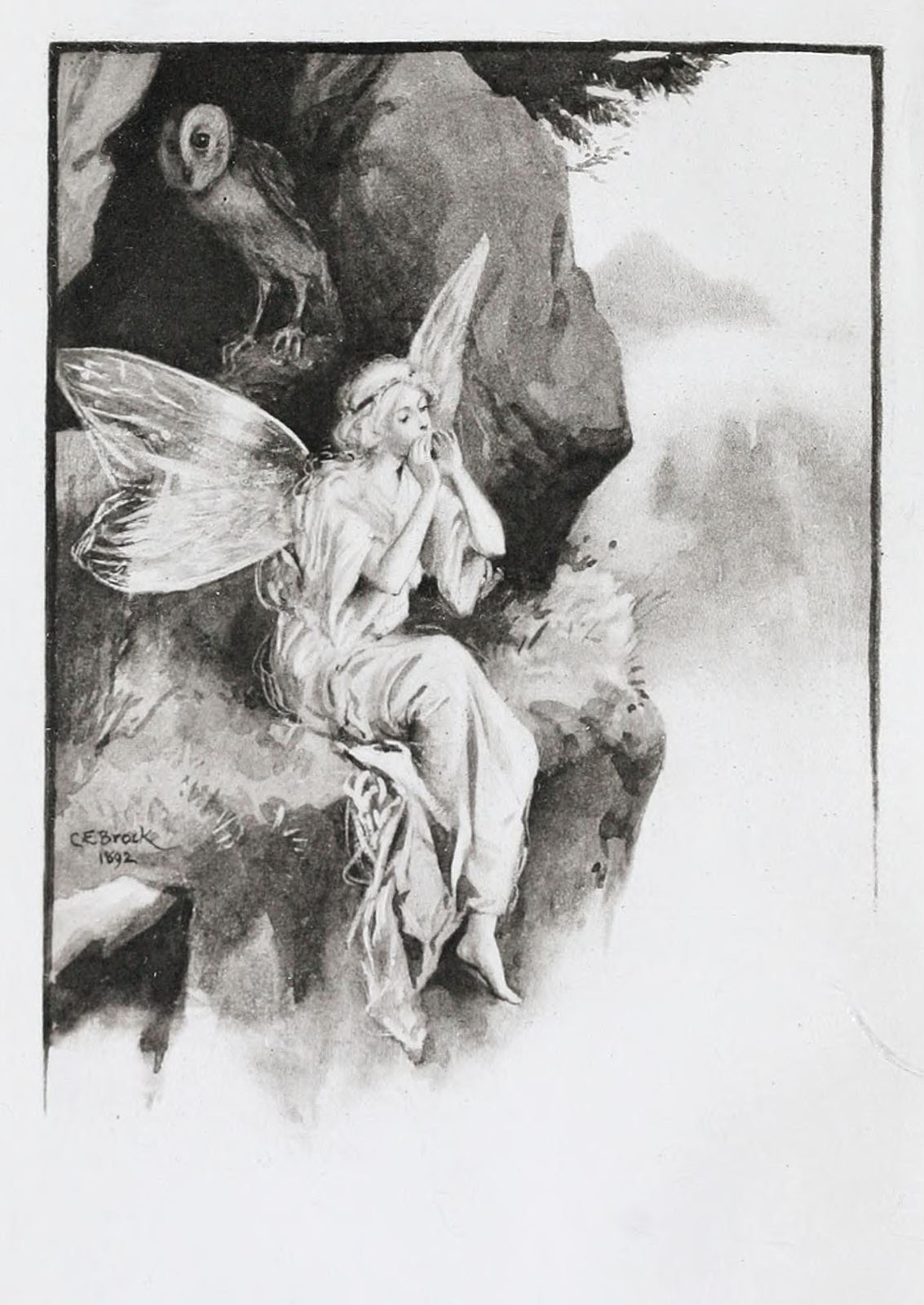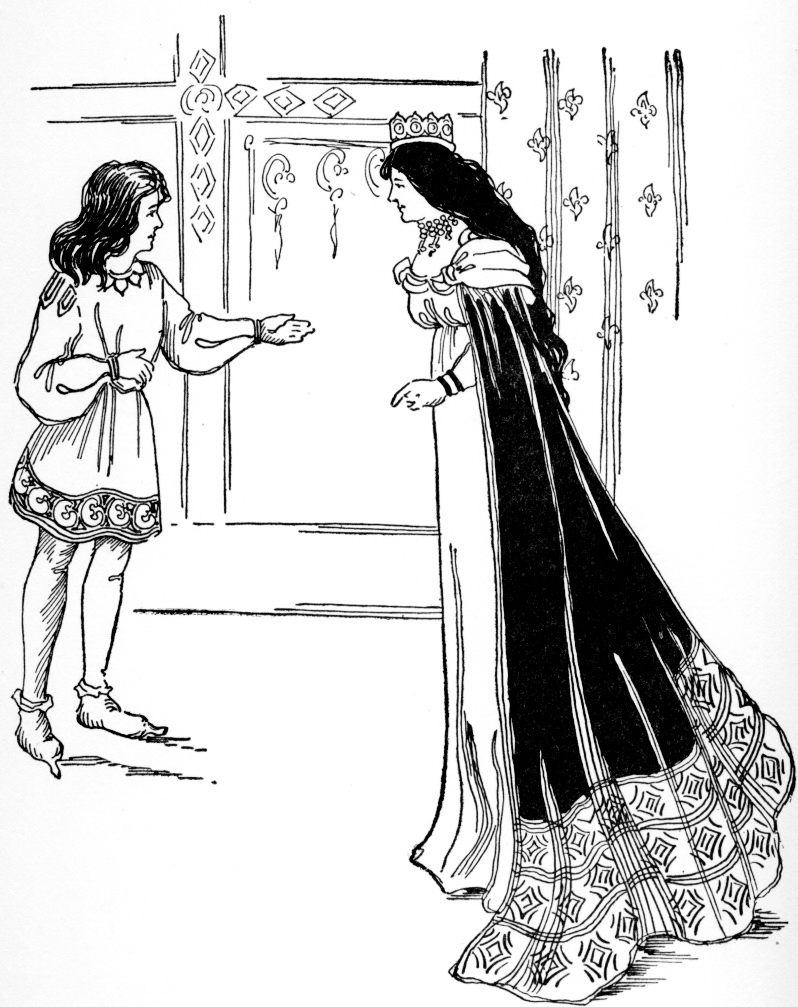|
Nimue
The Lady of the Lake (, , , , ) is a title used by multiple characters in the Matter of Britain, the body of medieval literature and mythology associated with the legend of King Arthur. As either actually fairy or fairy-like yet human enchantresses, they play important roles in various stories, notably by providing Arthur with the sword Excalibur, eliminating the wizard Merlin, raising the knight Lancelot after the death of his father, and helping to take the dying Arthur to Avalon after his final battle. Different Ladies of the Lake appear concurrently as separate characters in some versions of the legend since at least the Post-Vulgate Cycle and consequently the seminal ''Le Morte d'Arthur'', with the latter describing them as members of a hierarchical group, while some texts also give this title to either Morgan or her sister. Names and origins Today, the Lady of the Lake is best known as the character called either Nimue, or several scribal variants of Ninianne and Vivia ... [...More Info...] [...Related Items...] OR: [Wikipedia] [Google] [Baidu] |
Pelleas
Pelleas , or Pellias, is an Arthurian Knight of the Round Table whose story first appears in the Post-Vulgate Cycle. He becomes the husband of Nimue, the Lady of the Lake in ''Le Morte d'Arthur''. His character might have been connected to the figure of Pwyll, the fairy Rhiannon's human husband in Welsh mythology. In the Post-Vulgate, Pellias, the son of a poor vavasour, seeks the love of the high-born maiden, named Arcade or Archade. Though he wins her a golden circlet in a tournament, she spurns him, holes up in her castle refusing to see him, and sends her knights daily to humiliate him in hopes of driving him away. During the course of unrelated adventures, Gawain, Arthur's nephew, witnesses Pellias's humiliation and vows to help him by going to Arcade wearing Pellias' armour so that it appears that Pellias killed Gawain. Once in her confidences, Gawain plans to woo Arcade on behalf of Pellias, delivering her to him. Instead, Gawain falls for Arcade himself, his passion cau ... [...More Info...] [...Related Items...] OR: [Wikipedia] [Google] [Baidu] |
Morgan Le Fay
Morgan le Fay (; Welsh language, Welsh and Cornish language, Cornish: Morgen; with ''le Fay'' being garbled French language, French ''la Fée'', thus meaning 'Morgan the Fairy'), alternatively known as Morgan[n]a, Morgain[a/e], Morgant[e], Morg[a]ne, Morgayn[e], Morgein[e], and Morgue[in] among other names and spellings, is a powerful and ambiguous Magician (fantasy), enchantress from the legend of King Arthur, in which most often she and he are siblings. Early appearances of Morgan in Arthurian literature do not elaborate her character beyond her role as a goddess, a fairy , fay, a Witchcraft , witch, or a sorceress, generally benevolent and connected to Arthur as his magical saviour and protector. Her prominence increased as the legend of Arthur developed over time, as did her moral ambivalence, and in some texts there is an evolutionary transformation of her to an antagonist, particularly as portrayed in cyclical prose such as the ''Lancelot-Grail'' and the Post-Vulgate Cyc ... [...More Info...] [...Related Items...] OR: [Wikipedia] [Google] [Baidu] |
Le Morte D'Arthur
' (originally written as '; Anglo-Norman French for "The Death of Arthur") is a 15th-century Middle English prose reworking by Sir Thomas Malory of tales about the legendary King Arthur, Guinevere, Lancelot, Merlin and the Knights of the Round Table, along with their respective folklore. In order to tell a "complete" story of Arthur from his conception to his death, Malory compiled, rearranged, interpreted and modified material from various French and English sources. Today, this is one of the best-known works of Arthurian literature. Many authors since the 19th-century revival of the legend have used Malory as their principal source. Apparently written in prison at the end of the medieval English era, ''Le Morte d'Arthur'' was completed by Malory around 1470 and was first published in a printed edition in 1485 by William Caxton. Until the discovery of the Winchester Manuscript in 1934, the 1485 edition was considered the earliest known text of ''Le Morte d'Arthur'' an ... [...More Info...] [...Related Items...] OR: [Wikipedia] [Google] [Baidu] |
Brocéliande
Brocéliande, earlier known as Brécheliant and Brécilien, is a legendary enchanted forest that had a reputation in the medieval European imagination as a place of magic and mystery. Brocéliande is featured in several medieval texts, mostly these related to the Matter of Britain, Arthurian legend, as well as in numerous modern works. Brocéliande first appeared in literature in Wace's 1160 chronicle ''Roman de Rou'' that reported on the fanciful tales surrounding its location in Brittany. It is a place of legend due to its uncertain location, unusual weather, and its ties with Arthurian mythology, most notably the tomb of Merlin.Lupack, Alan. ''The Oxford Guide to Arthurian Literature and Legend'', (New York, NY: Oxford University Press USA, 2007), page 437. In chivalric romance lore, the forest sheltered Morgan le Fay, Morgan's magical Val sans retour, Vale of No Return, the faery fountain of Barenton, and the place of Merlin's retirement, imprisonment, or death. Today, it is ... [...More Info...] [...Related Items...] OR: [Wikipedia] [Google] [Baidu] |
Matter Of Britain
The Matter of Britain (; ; ; ) is the body of medieval literature and legendary material associated with Great Britain and Brittany and the list of legendary kings of Britain, legendary kings and heroes associated with it, particularly King Arthur. The 12th-century writer Geoffrey of Monmouth's (''History of the Kings of Britain)'' is a central component of the Matter of Britain. It was one of the three great Western Literary cycle, story cycles recalled repeatedly in medieval literature, together with the Matter of France, which concerned the legends of Charlemagne and his Paladin, companions, as well as the Matter of Rome, which included material derived from or inspired by classical mythology and classical antiquity, classical history. Its pseudo-chronicle and chivalric romance works, written both in prose and verse, flourished from the 12th to the 16th century. Name The three "matters" were first described in the 12th century by French poet Jean Bodel, whose epic ' ("Song ... [...More Info...] [...Related Items...] OR: [Wikipedia] [Google] [Baidu] |
Fairy
A fairy (also called fay, fae, fae folk, fey, fair folk, or faerie) is a type of mythical being or legendary creature, generally described as anthropomorphism, anthropomorphic, found in the folklore of multiple European cultures (including Celtic mythology, Celtic, Slavic paganism, Slavic, Germanic folklore, Germanic, and French folklore, French folklore), a form of Supernatural#Spirit, spirit, often with metaphysical, supernatural, or preternatural qualities. Myths and stories about fairies do not have a single origin but are rather a collection of folk beliefs from disparate sources. Various folk theories about the origins of fairies include casting them as either demoted angels or demons in a Christian mythology, Christian tradition, as deities in Paganism, Pagan belief systems, as Spirit (supernatural entity), spirits of the dead, as Prehistory, prehistoric precursors to humans, or as spirits of nature. The label of ''fairy'' has at times applied only to specific Magic (su ... [...More Info...] [...Related Items...] OR: [Wikipedia] [Google] [Baidu] |
Bibliothèque Nationale De France
The (; BnF) is the national library of France, located in Paris on two main sites, ''Richelieu'' and ''François-Mitterrand''. It is the national repository of all that is published in France. Some of its extensive collections, including books and manuscripts but also precious objects and artworks, are on display at the BnF Museum (formerly known as the ) on the Richelieu site. The National Library of France is a public establishment under the supervision of the Ministry of Culture. Its mission is to constitute collections, especially the copies of works published in France that must, by law, be deposited there, conserve them, and make them available to the public. It produces a reference catalogue, cooperates with other national and international establishments, as well as participates in research programs. History The National Library of France traces its origin to the royal library founded at the Louvre Palace by Charles V in 1368. Charles had received a collection o ... [...More Info...] [...Related Items...] OR: [Wikipedia] [Google] [Baidu] |
Henry Lovelich
Henry Lovelich (fl. mid-15th c.), also known as Herry Lovelich, and Lovelich the Skinner, was an English poet of 15th-century London. He is best known as a translator into Middle English verse of Robert de Borron's lengthy Arthurian poems written in French: ''The History of the Holy Grail'' and '' The Romance of Merlin''. Works The estimated dates for the ''Holy Grail'' and ''Merlin'' translations are 1450–1475, although some earlier scholars suggested 1420–1455.Roger Dalrymple: "Evele knowin ʒe Merline, jn certeyn. Henry Lovelich's ''Merlin''". ''Medieval Insular Romance. Translation and Innovation'', eds Judith Weiss, Jennifer Fellows and Morgan Dickson (Cambridge: D. S. Brewer, 2000), p. 150 ffRetrieved 24 June 2018./ref> The form of English employed has been described as "a Southern dialect with some Midland forms in evidence". The versification has been described as poor, but the ''Merlin'' manuscript has never been fully edited or glossed. However, several of Henry Lo ... [...More Info...] [...Related Items...] OR: [Wikipedia] [Google] [Baidu] |
Morgause
Morgause ( ) is a popular variant of the figure of the Queen of Orkney, an Arthurian legend character also known by various other names and appearing in different forms of her archetype. She is the mother of Gawain and often also of Mordred, both key players in the story of her brother King Arthur and his downfall. In the early chronicles and romances based on or inspired by Geoffrey of Monmouth, as well as in the Welsh tradition, her figure and role are commonly that of Gawain's mother, and she is either a full or half sister to Arthur. In most cases, she is the wife or widow of King Lot, ruling over either Orkney or Lothian. However, her name varies widely between texts, as does the issue of her children other than Gawain, and Mordred's own parentage is often only presumed rather than stated. In a later popular tradition, Mordred becomes the offspring of Arthur's own accidental incest with his estranged half-sister, whom Thomas Malory's seminal ''Le Morte d'Arthur'' calls ... [...More Info...] [...Related Items...] OR: [Wikipedia] [Google] [Baidu] |





